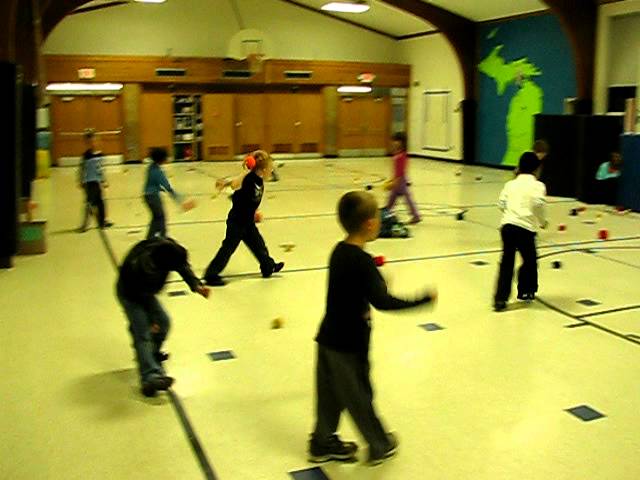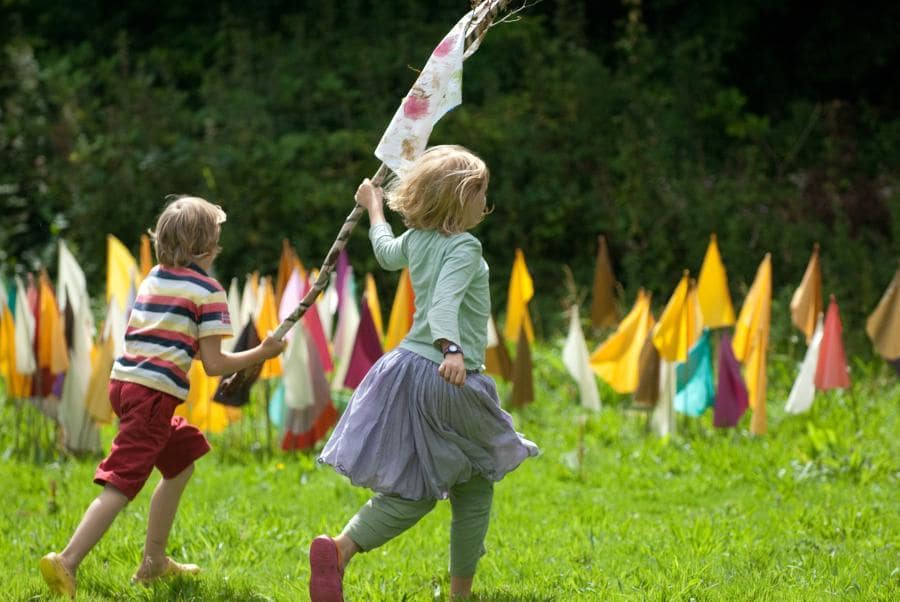The beauty of anything is based on its ease, no matter if that’s a person or a game. Games are a fun way to bond, especially when they help you develop skills. So are these Minor games too: Can be played anywhere, do not need any prior knowledge, and can be enjoyed by everyone in the family and school.
Isn’t it like a Christmas deal? You buy something, and you get a complimentary add-on. So, what are minor games for primary students? Minor games are a set of games that are created to encourage the practice of skills in situations that can be deemed challenging. They are simple games for children with very few rules. There is no hard and fast way to define minor games – just grab your gaming spirit and get playing.
Here we will look at the minor games’ meaning and the different types of minor games that can be played.
What Are Minor Games?
Minor games are those for kids that help enhance and develop an individual’s motor skills. These minor games can be outdoor games or indoor activities for kids. They require very little equipment and don’t require a lot of knowledge to play; you just need to adhere to the instructions. Minor games have simple rules; You can enjoy minor games by playing alone or in pairs/groups to enjoy your leisure. Different types of minor child games can be played in different ways.
Types of Minor Games:
Indoor Minor Games –
Some examples of indoor minor games include War Ball, Star Wars Throwing Game, The Sheep and the Wolf, etc
Outdoor Minor Games –
Some examples of outdoor minor games include Kings of Castle, Protect the President, Capture the Flag, Backboard Ball, etc
Benefits of Playing Minor Games:
- Help us improve our cognitive skills.
2. Develop motor skills in sportsmanship.
3. Many skills, like building skills, communication skills, etc, would be built gradually.
4. Improves mental health.
5. Learn the importance of teamwork.
These games require as little as 20 minutes and can be played for an endless number of hours, depending on your spare time and energy. Here is a minor child’s games with 10 games that you can try out:-
Top Eleven Easy to Play Minor Games:
Looking for a minor games list in physical education, minor game list, minor games name, minor games in physical education, or minor games for school students? Here are the Top Eleven Easy to Play Minor Games:
Don’t fret over which minor games for kids to pick because here we have a minor games for you to pick from. You can also learn about the importance of games here. List of minor games in India
1. War Ball:
Things Required:
Three softballs
Players:
Minimum 3 to 4
How To Play
You can call it an indoor dodgeball. So, it is an indoor minor game. You play it in the same fashion, but with no team. Anyone can hit the other one below the shoulder. The player who gets hit is out and has to sit on the side until the one who got him out gets hit by someone else. Once this happens, he is allowed back into the game. The one who gets every other player out is the winner. You can play this game for hours.
Rules:
The player with the ball in his hand can take only one of two forwards before hitting. None of the players is allowed to catch the ball. In case he does, he is out of the game. Also, no player is allowed to hold the ball for more than five seconds.
2. Star Wars Throwing Game:
Things Required:
Indoor or foam balls
Players:
At least 3 to 4
How To Play
Are you looking for minor games for children? The game is played in a teams of two. The players are divided equally between the two teams. A line is drawn between the two teams, and foam balls are kept on the line. The players aim at hitting the maximum number of players from the opposite team below the shoulder. One who gets hit has to sit back and is only allowed back in the game once the secret Jedi knight (one of the members from the same team) touches them. The team whose players get hit first loses.

Rules:
The hits over the shoulder will not be counted. If the secret Jedi gets hit, no other player can be saved. Identifying the secret Jedi also earns an extra point for the opposition.
3. King of the Castle:
Things Required:
Cones and softballs
Players:
At least 4 to 5
All the players get the cones except for two. The players are supposed to be given the cones, and the ones left aside can be decided according to the total number of players. For every five players, one player should be left without the cone. The softballs are then thrown into the playing area. Without using their hands, the players have to knock out the cones in the hands of the other players. The one whose cone falls hands over his cone to one of the players sitting without them. The one who is left at the end with the cone in his hand is the winner.
Rules:
The player is out if he uses his hands to throw the ball. The ball I not allowed to be thrown above the waist. No physical contact between the players is allowed.
| You may be interested in reading The Importance of Games and Sports in Student’s Life |
4. Protect the President
Things Required:
Softballs
Players:
At least 5 to 6
How To Play
What physical games can children play at a picnic or outdoor party? The players are asked to stand in the circle. It is basically an outdoor game. Two of them are made to stand in the centre. One of them is named the president, and the other one is his bodyguard. The players in the circle throw the balls at the president, and the bodyguard has to protect the president. If any of the balls hit the president, the player who threw the ball becomes the bodyguard, and the bodyguard is the new president. The president goes with the other players standing in the circle.
Rules:
The circle should be big enough to ensure that the players are not throwing the ball from a very short distance.

5. Capture the Flag:
Things Required:
Cones, flags, and coloured bands
Players:
At least 5 to 6
How To Play
The game is played in two teams. The line of cones separates them. The area for each team has a jail area and a flag area( where the flags are kept). The players from the opposite team have to take the flags and run away to their area. If the player is caught in the opposite team’s area, he is supposed to stay in the area designated as the jail area.

Rules:
Tripping is not allowed in the game. Make sure there are proper boundaries to avoid any confusion during and after the game.
These were easy-to-play minor games. Hope you understand the importance of major and minor child games in physical education.
6. Backboard Ball
Things Required:
A basketball, A basketball court
Players:
At least 5 to 6
How To Play
Backboard basketball is played in the same way as regular basketball is played; a player has to throw the ball into the backboard, and it is collected by the other participant of that player’s team. The rules may be changed so that you can play with or without dribbling the ball. These are the best physical games to play, and thus engage kids for a longer time.
7. Footy Baseball
Things Required:
One football, cones
Players:
At least 5 to 6
How To Play
Any open area can be indoor or outdoor. The players are divided into 2 groups: kicking and fielding. A diamond is laid out in the same manner as a baseball field, with cones designating the bases. Baseball regulations apply, with the exception that football (AFL) abilities are used in place of pitching and hitting. The pitcher hands the ball to the hitter; if it is missed, it is a “strike,” and if it doesn’t go to the batter, it is a “ball.” The hitter throws the ball into the playing field and then goes around the bases, attempting to score a run. To get the runner out, fielders pass or kick the ball to the bases.
8. Slam Dunk
Things required:
a ball, a bin
Players:
at least 2
How To Play
With 2 players, you can start off by playing a 1-1 match. One of the players will start at the sideline and will have to run with the ball and try to dunk the ball in the bin. They cannot throw the ball (this is while playing 1 on 1). The other player has to run after them and tag them. In this case, if they are able to tag the player with the ball successfully, they change positions. For a 2 on 2 match, the rules remain the same. There are teams made, and the players are allowed to throw the balls amongst themselves.
9. Golden Child
Things required:
a ball
Players:
at least 4
How To Play
There will be two teams divided equally. One team makes the running team, and the other makes the shooting team. The running team stands at the court line, a little away from the goal. The shooting team takes the ball and tries to score a goal. While the shooting team is trying to score, one player from the running team runs across the court’s boundaries. When they complete one whole round and come back to where they started, one run is scored. Meanwhile, if the shooting team manages to score a goal, the running player freezes at the spot if they haven’t finished a round yet. This goes on till the last player of the running team, also termed as the ‘golden child’, starts running. They have the ability to unfreeze the frozen players by tagging them. If all of them succeed in completing a round, they win. If not, the shooting team wins.
10. Warriors and Dragons
Things required:
a ball, and a bib
Players:
5-6
How To Play
Teams are made into warriors and dragons. The dragons have to wear bibs. The warriors run after the dragons and have to tag them with the ball. If they are able to tag the dragons, then they switch positions, and the dragon becomes the warrior. The dragons have to remove their bibs after getting caught. The game goes on till all the dragons have been caught.
11. The Sheep And The Wolf
Things required:
Nothing.
Players:
15-20
How To Play
Two lines are to be drawn at each end of a room. One player will be deemed the wolf and will stand in the centre between the two lines. The rest of the players are, naturally, sheep. They stand behind the two lines at the back. The wolf claps its or her hand, and it is then that the sheep will try to reach the opposite line without being caught by the wolf. The original wolf is the one who can indicate to the sheep to run. The sheep can be caught by a pat on the back and eventually become a wolf. The game eventually goes on, with every time a wolf catches a sheep, it will eventually turn into a wolf.
12. Hide and Seek
Things required:
Nothing.
Players:
At least 5
How To Play
Hide and Seek is a fun and engaging game that will add creativity and out-of-the-box thinking options among the kids while finding hiding spots. It’s a great way to enjoy the outdoors and bond with friends and family.
13. Duck, Duck, Goose
Things required:
Nothing.
Players:
At least 5
How To Play
“Duck, Duck, Goose” is a very popular children’s game that is played in a group, by energetic and having fun. This can be one of the list of primary games. Everyone will be sitting in a circular position, and one person will go around saying, duck-duck by tapping their head. When he says goose, then the person should get up and chase the person who said goose, before he sits in his position. If he sits, then the person is a new goose, or the other person should continue in the same way.
Creative Minor Games to Boost Imagination

Description of creative and educational games that are both fun and beneficial:
- Scavenger Hunts
Scavenger chases are fun and entrancing, yet they additionally go about as creative and informational games for individuals, everything being equally. These intelligent games advance decisive reasoning, critical thinking, and joint effort, subsequently fostering various mental capacities. Scavenger hunts may assist children at an early age by encouraging observational skills, pattern identification, and their capacity to follow directions. Furthermore, organising themed scavenger hunts around certain topics or disciplines may incorporate instructional components, making education more interesting.
- Alphabet or Number Treasure Hunt
Are you interested in knowing a few primary games for kids? Alphabet and number treasure hunts are both creative and informative activities, providing a dynamic method to reinforce core skills in young children. An alphabet treasure hunt involves searching for things or clues that match each word of the alphabet. This game not only improves letter identification but also increases language and observational abilities. Similarly, a treasure hunt for treasure entails discovering treasures or solving riddles based on numerical patterns.
- Memory Games (e.g., matching pairs)
Memory games are distinguished as simultaneously creative and informative, providing a fun approach to improve cognitive abilities and memory retention. These games often require matching pairs of jumbled and lying down cards or photos, with participants challenged to recall the placement of each pair. Memory games help people of all ages enhance their concentration, ability to focus, and dedication to detail. The act of flipping hands and trying to identify them improves spatial recall and pattern identification.
- Charades (with easy prompts for younger children)
Charades, while popular for its value as a pastime, may also be used as a creative and informative game, especially in classrooms or as a family exercise. The game requires individuals to act out an expression or word while speaking, others try to guess the proper response. Charades can be used in an educational setting to emphasize various courses or concepts. Students in language classes can act out phrases in a foreign language to improve vocabulary recall.
These were easy-to-play minor games for students with the best principles in sports. Hope you understand the importance of minor games. Minor games for physical education enhance the child’s team-building skills, communication skills, strategy, balance, and a lot more, which is why they should be incorporated into their daily schedule. Minor games that are for kids are extremely important, but so is your baby’s diet.
You can explore the different types of diets and food charts for your child’s different ages and developmental stage, such as a diet plan for 8 month baby. Learn about different healthy food options as well.
Frequently Asked Questions on Minor Games
1. What are some examples of minor games?
Some examples of Minor list of indoor games names are war balls, star ball throwing games, King of the Castle, protect the President, Capture the Flag, backboard ball, footy baseball, slam Dunk, Golden Child, warriors and Dragons, the Sheep and the Wolf and a lot more they are both and indoors and outdoor games that can be useful and important for overall child’s development.
2. What characteristics define minor games?
Playability with or without equipment, the capacity to arrange the game to fit the space at hand. Utilization of resources that can be taken readily from your environment, and the capacity to change laws and regulations.
3. How important is the minor game?
Minor games in India are intended to further develop fundamental motor skills and their effective application in games, as well as fundamental offensive and defensive game strategies. Minor games for physical education also teach the value of fair play, safe practices, and cooperative participation.
4. What are minor game examples?
A few other minor game examples include Four Squares, Monkey in the Middle, Capture the Flag, Sharks and Minnows, and Dodgeball. These games can be played in a variety of settings and often help develop specific skills such as teamwork, motor skills, agility etc.
5. What are minor activities?
Small-scale, light-intensity physical exercises are a great way to boost your general well-being during the day. They frequently consist of straightforward acts or movements that may be incorporated into everyday activities or breaks and carried out in a variety of contexts, including within the house, on the job, or at school.
6. What age group are easy-to-play games suitable for?
Easy-to-play games are often appropriate for a wide variety of ages, from young toddlers to adults. These games are meant to be simple and accessible, making them excellent for people who are unfamiliar with complicated regulations or elaborate strategy.
7. Are there any safety considerations to keep in mind when playing easy-to-play games with kids?
When playing simple games with children, consider safety to guarantee a good, safe gaming experience. Here are a few safety considerations:
Age-Suitable Games: Select games that are for kids. Guarantee that the game’s substance, rules, and subjects are fitting for their age and development level.
Little pieces and Stifling Perils: Be careful about games with little pieces, as they can pose the risk of gagging to small kids. Always adhere to the age guidelines stated by the game developer.
8. Do easy-to-play games that are for kids require special equipment or materials?
Easy-to-play games are intended to be accessible, and they often do not require any additional equipment or resources beyond what is included in the game box. The goal is to make the setup basic so that players can immediately understand the rules without the need for complex components. Easy-to-play games typically include the following characteristics:
Minimal Components: These games frequently have a small number of parts, which makes them simple to set up and operate.
Standard Household goods: Many simple games employ everyday goods such as cards, dice, paper, or ordinary objects, reducing the need for specialist equipment.
9. Can easy-to-play games be modified for children with special needs or disabilities?
Yes, simple games from the minor games list in physical education may be tailored to suit children with particular requirements or impairments, resulting in an inclusive and joyful gaming session. Here are some thoughts and changes:
Sensory Modifications: For kids who have sensory sensitivities, try utilising alternate materials that are tailored to their tactile preferences. Reduce aural stimulation by using softer or textured items, adjusting lighting, or providing headphones.
Adapted Rules: Change the rules of the contest to accommodate the child’s ability. Simplify instructions, minimise the number of steps, or devise new methods to engage. Concentrate on the components of the activity that match the child’s talents and interests. You can easily adapt activities from any minor game list to make them more inclusive.
10. What’s the funnest game for kids?
One of the funnest games for kids is War Ball, which is an energetic twist on the game of dodgeball. Games like Star Wars, Throwing Games for fantasy play, Hide and Seek, or Duck, Duck, and Goose are also very fun for kids. These games are great examples from the minor games name collections that engage kids actively.
Whether it’s from a minor games in physical education curriculum or casual play activities, such games foster team spirit, imagination, and action-packed engagement that are sure to be memorable experiences! These activities are also ideal minor games for school students looking for quick, fun physical exercises.
11. Which is the minor game?
A minor game is just a simple, fun activity that is designed to help improve certain skills such as coordination, teamwork, and agility. It can be Duck, Duck, Goose and Hide and Seek for outdoors, or Simon Says and Four Squares for indoors. These minor games for children indoors and outdoors are suitable for keeping children active and engaged while they learn very important skills.
12. How to play minor games?
To play minor games, one can choose simple games like Hide and Seek or Duck, Duck, Goose that do not require much equipment or setting up. These games are focused on fun and building skills, so they are best suited for primary gaming sessions with children, either indoors or outdoors.
13. What are active play and minor games?
Active play involves physical games to play for children, such as running, jumping, or throwing. Minor games are light and fun activities that foster teamwork and coordination. These can be War Ball and Star Wars Throwing Games for energetic fun, or Hide and Seek and Duck, Duck, Goose for easy indoor options. These are the easy, minor games indoors, which are perfect for keeping kids active and entertained!
Read More Posts:
50+ Mother’s Day Wishes and Messages To Send To Your Mom | Indian Diet Chart for 8 Months Baby | First Birthday Party Themes For Baby Boys in India | Safe Period Calculator | Baby Boy Names With Meaning | Top Facebook Groups For Indian Moms | Symptoms of Baby Boy During Pregnancy | 10 Month Baby Food Chart | Home Remedies To Treat Gas In Babies | Fancy Dress Ideas For Girls | 9 Month Baby Food Chart | Easy To Play Games For Kids | How To Teach Kids To Share | Best Boating Places In Bangalore | Fancy Dress Ideas For Kids | Home Remedies For Baby Hair Removal | Importance of Games and Sports in Student’s Life | Letter to My Son on his 11th Birthday | Role of Social Class in Parenting | Top 11 Easy To Play Minor Games
- Diet During 7-9 Months After Delivery - December 25, 2020
- Diet During 1-3 Months After Delivery - September 3, 2020
- Top 11 Easy To Play Minor Games - August 31, 2020
- High Five Principles of Sports - August 24, 2020
- Best Outdoor Games for Kids - August 12, 2020
- Best Indoor Games for Kids - August 12, 2020

















